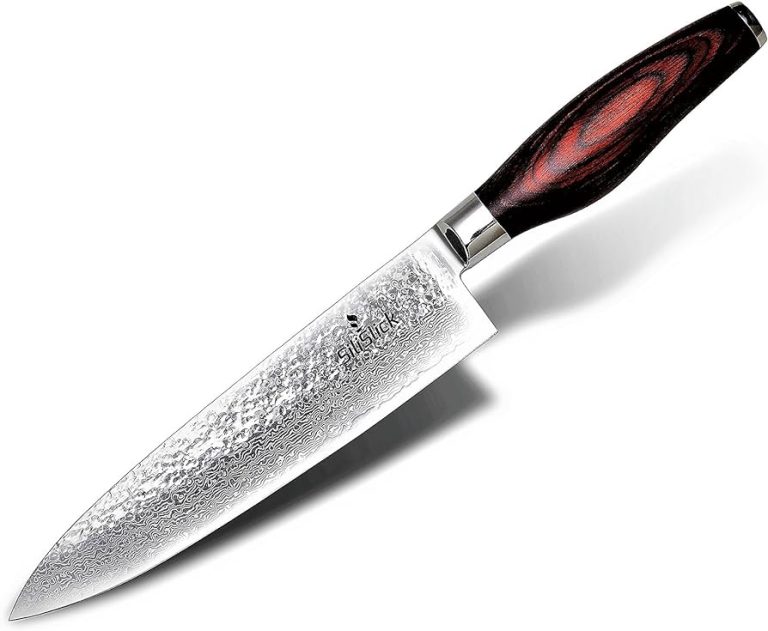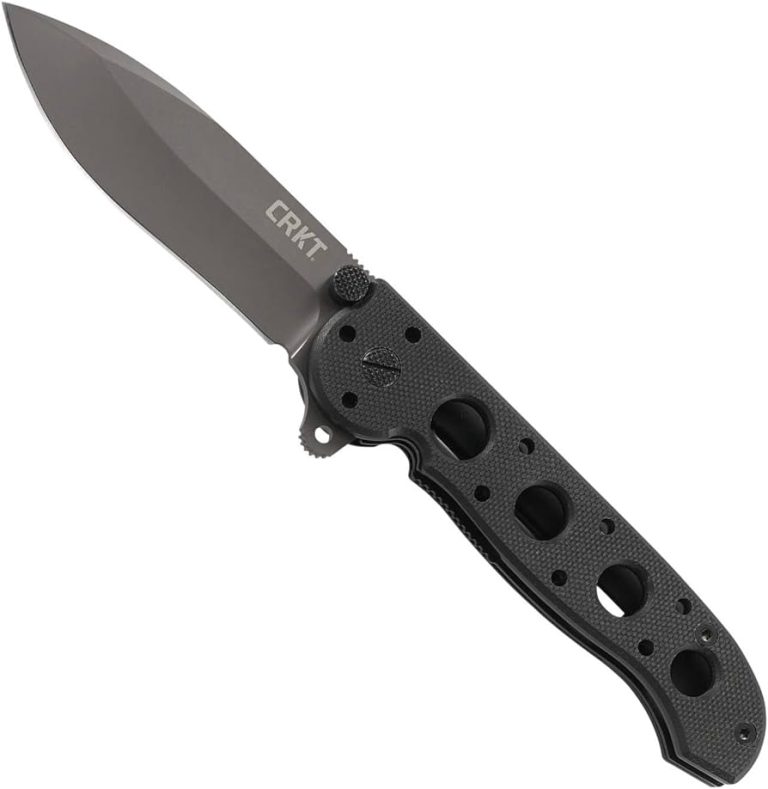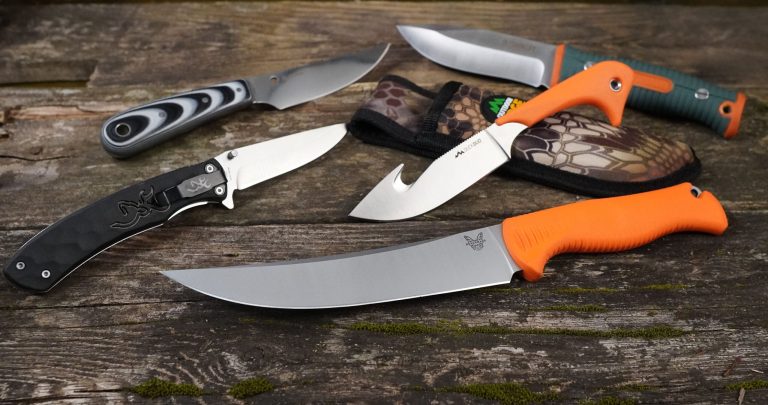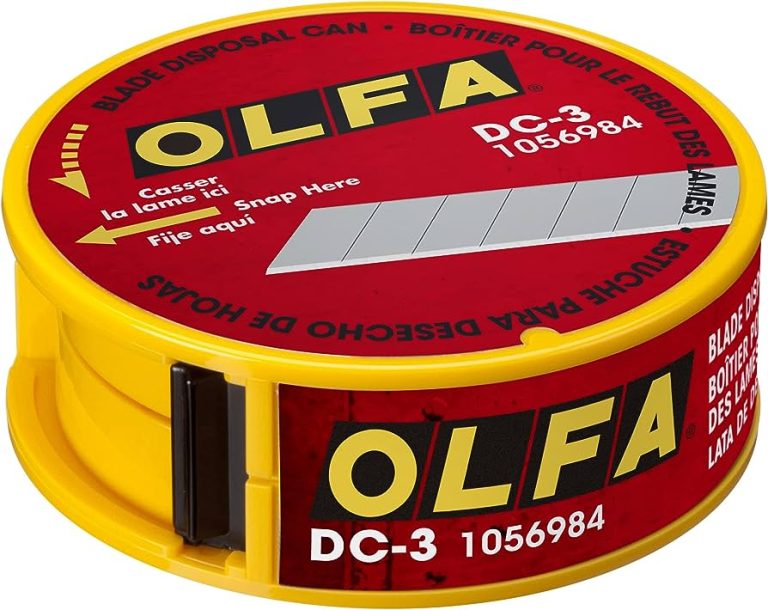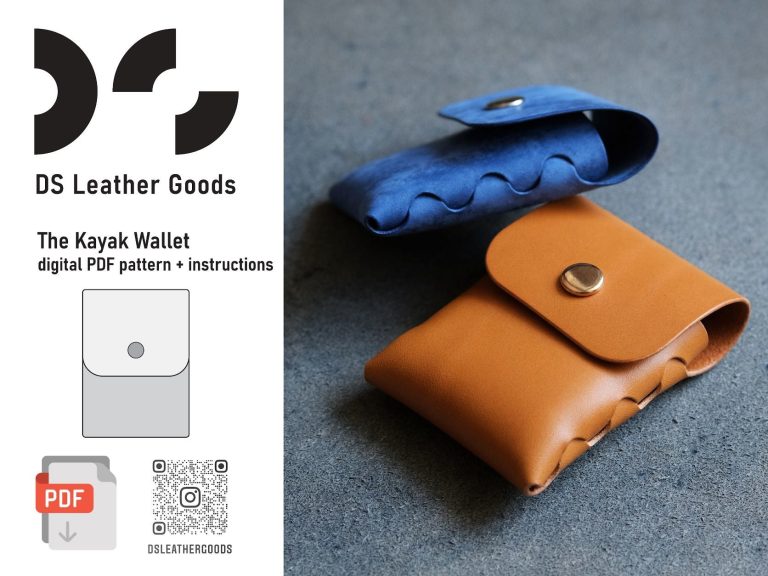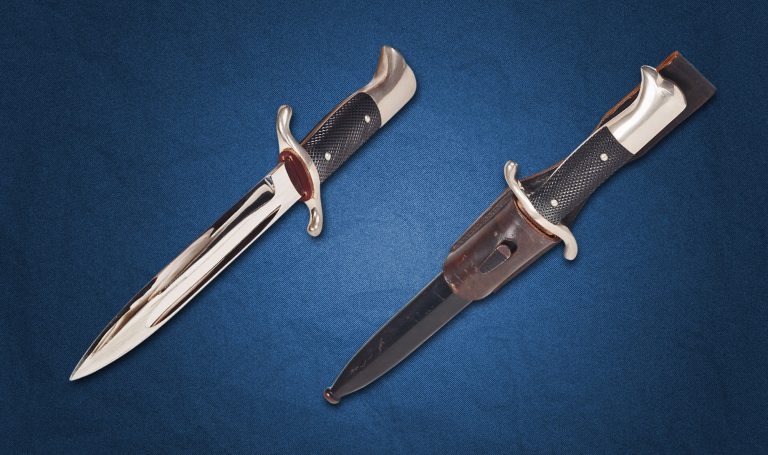Hunting Knives for Big Game: What to Look For
Hunting knives for big game should have a sturdy blade and a comfortable handle for optimal performance. When choosing a hunting knife, consider the blade material, blade shape, blade length, handle material, and handle ergonomics.
A high-quality knife with a fixed blade is recommended for the task. The blade material should be strong and corrosion-resistant, like stainless steel or a high-carbon alloy. The blade shape should be versatile for different tasks such as field dressing, skinning, and slicing.
A blade length of around 3-5 inches provides a good balance between control and versatility. The handle should be made of durable material, like rubber, G10, or Micarta, and have a ergonomic design for a comfortable and secure grip. By considering these factors, you can find the perfect hunting knife for big game that meets your specific needs and preferences.
Factors To Consider When Selecting A Hunting Knife
| Blade Material |
| The blade material of a hunting knife is an essential factor to consider. Stainless steel blades are durable and resistant to corrosion, while carbon steel blades offer superior sharpness and ease of sharpening. |
| Blade Length |
| The blade length determines the knife’s versatility and intended use. A shorter blade provides better control and maneuverability for intricate tasks, while a longer blade is ideal for heavy-duty cutting and skinning. |
| Blade Type |
| Consider the blade type based on your hunting needs. Drop-point blades offer a strong tip and versatile cutting edge, while clip-point blades provide precision for piercing and skinning tasks. Gut-hook blades are specifically designed for field dressing. |
| Handle Design |
| The handle design should ensure a comfortable grip and prevent slippage, especially when wet or bloody. Look for ergonomic handles made of durable materials like rubber, wood, or synthetic composites. |
| Tang Type |
| The tang type refers to the extension of the blade into the handle. Full tang knives offer optimal strength and balance, while partial tang knives are lighter and more affordable. |
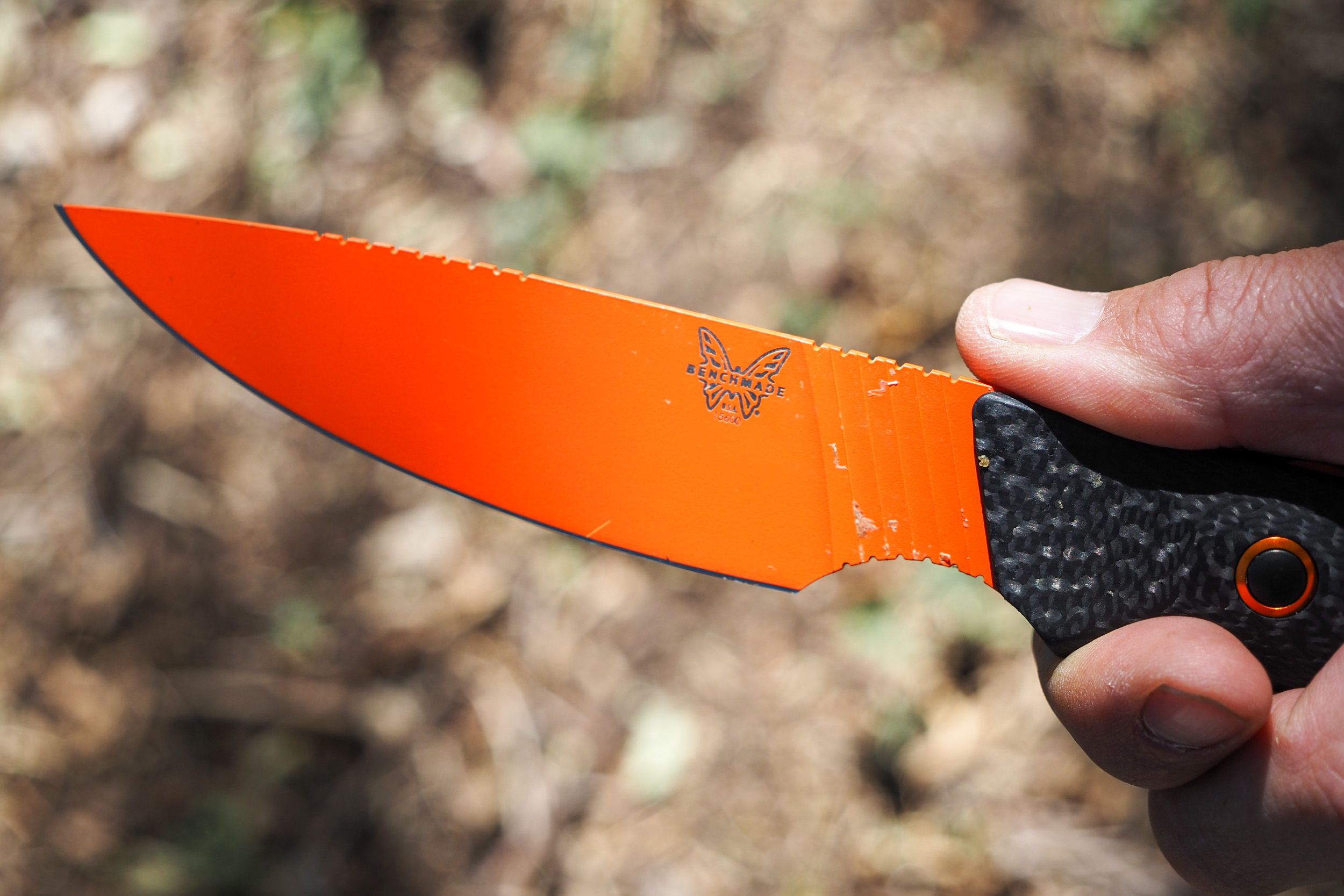
Credit: gearjunkie.com
Different Types Of Hunting Knives
Different types of hunting knives are available for big game hunting. These knives serve various purposes and are designed to meet specific needs. Fixed blade knives are popular among hunters due to their durability and strength. They offer stability and are ideal for heavy-duty tasks. Folding knives are versatile and easy to carry. They are compact and can be conveniently stored when not in use. Gut hook knives have a specialized blade with a hook on the spine, making it efficient for field dressing and skinning large game. Skinning knives are specifically designed for removing the animal’s hide effectively. They have a narrow, curved blade that allows precision. Boning knives have a thin, flexible blade that helps in deboning and boning meat effortlessly.
Importance Of Blade Material
Importance of Blade Material:
When it comes to selecting hunting knives for big game, the blade material plays a crucial role. A high-quality blade ensures durability, sharpness, and optimal performance during hunting expeditions. There are three popular types of blade materials that are commonly used:
| Blade Material | Description |
|---|---|
| Stainless Steel Blades | Stainless steel blades offer excellent corrosion resistance, which is advantageous when exposed to moisture and various weather conditions. They are relatively easy to maintain, making them suitable for hunters who prefer low-maintenance knives. |
| Carbon Steel Blades | Carbon steel blades are known for their exceptional strength and sharpness. They are highly durable and provide superior cutting performance. However, they require regular maintenance to prevent rusting. |
| Damascus Steel Blades | Damascus steel blades are renowned for their beauty and unique patterns. They offer a combination of high strength and sharpness. These blades are ideal for hunters who appreciate both functionality and aesthetics. |
It is important to consider your specific needs and preferences when selecting a blade material. Evaluate factors such as ease of maintenance, durability, and desired appearance to make an informed decision.
Blade Design And Shape
When choosing a hunting knife for big game, blade design and shape are crucial factors to consider. Different blade designs serve different purposes and excel in specific tasks.
Drop Point
In the case of a drop point blade, it features a curved edge with a sharp point, making it an ideal choice for general-purpose hunting needs. Its sturdy construction allows for versatile use and precision during skinning, field dressing, and caping.
Clip Point
A clip point blade showcases a concave section on the back leading to a fine, sharp point. It offers better control and excellent piercing capabilities, making it useful for delicate tasks, such as removing organs or performing detailed cuts.
Tanto Point
The tanto point blade boasts a strong, reinforced tip that ensures exceptional strength and durability. Its primary advantage lies in its piercing ability, piercing through tough hide and bone with ease. This design is often favored for its reliability during field dressing and quartering.
Gut Hook
Gut hook blades are specifically designed for field dressing game. This unique feature aids in cleanly opening the abdomen without puncturing the entrails. Its hook-like shape allows for controlled and precise cuts, minimizing the risk of accidental damage.
When selecting a hunting knife, carefully consider the blade design and shape that best suits your intended tasks. Each design offers distinct advantages that can enhance your hunting experience in specific scenarios.
Handle Material And Ergonomics
| Handle Material and Ergonomics | |
|---|---|
| Wood Handles | Wood handles are known for their classic and natural appeal. They provide a traditional look and feel, making them popular among collectors and enthusiasts. However, wood handles require regular maintenance as they can absorb moisture and become brittle over time. |
| Synthetic Handles | Synthetic handles, such as those made from various types of plastics or composites, offer durability and resistance to moisture. They are less likely to crack or warp, making them suitable for outdoor use and harsh conditions. Additionally, synthetic handles are often more affordable compared to other materials. |
| Rubber Handles | Rubber handles provide a secure and comfortable grip even in wet or slippery conditions. They offer shock absorption and excellent traction, enhancing user control and reducing hand fatigue. Rubber handles are commonly found on more rugged and heavy-duty hunting knives. |
| Ergonomic Design | Consider a hunting knife with an ergonomic design, featuring a handle that conforms to the natural contours of the hand. This design helps to reduce strain and enhance control during prolonged use. Look for features such as finger grooves, textured grip surfaces, and finger guards for added safety. |
Locking Mechanisms
Liner Lock
A liner lock is a popular locking mechanism found in many hunting knives. It utilizes a metal liner that is placed inside the handle and moves into position to lock the blade open. The liner lock is engaged by pushing the liner to the side, allowing the blade to close. This mechanism provides a secure and reliable lock that is easy to use with one hand.
Frame Lock
The frame lock, also known as the integral lock, is another common locking mechanism used in hunting knives. It features a handle frame that functions as both the handle and the lock. When the blade is open, it engages with the frame, creating a solid lock. The frame lock offers excellent strength and stability, making it ideal for heavy-duty use during big game hunting.
Lockback
A lockback mechanism is characterized by a folding knife with a pivoting blade and a spring-loaded lock release on the spine of the handle. It operates by applying pressure to a lever or button, allowing the blade to fold back into the handle for safe storage. Lockback mechanisms are reliable and secure, ensuring that the blade remains in place during use.
Axis Lock
The axis lock is a locking mechanism that utilizes a spring-loaded bar that runs parallel to the blade. When the blade is in the open position, the bar securely holds it in place, ensuring stability and strength. The axis lock is known for its smooth operation and can easily be released with one hand. It is a durable and dependable locking mechanism for big game hunting knives.
Cleaning And Sharpening
When it comes to cleaning hunting knives, it is important to follow a few simple steps to maintain the blade’s sharpness and longevity. Firstly, make sure to remove any excess dirt or debris from the knife by wiping it down with a clean cloth. Next, use a mild soap and warm water to gently clean the blade, being careful to avoid soaking the handle. For tougher stains or rust spots, consider using a specialized knife cleaner or rust remover.
After cleaning, it is essential to properly dry the knife to prevent any moisture from causing damage. Use a clean cloth or towel to thoroughly dry the blade and handle, ensuring that no water is left behind. Once the knife is completely dry, it is time to sharpen the blade. Using a sharpening stone or honing rod, apply consistent pressure while sliding the knife across the stone in a controlled motion. Repeat this process on both sides of the blade until the desired sharpness is achieved. Remember to always follow the manufacturer’s instructions and take proper safety precautions when sharpening your hunting knife.
Storage And Safety
Proper storage techniques and safety are crucial when it comes to handling hunting knives. To ensure the longevity of your knife and prevent accidents, follow these tips:
- Store in a dry environment: Moisture can cause rusting, so keep your hunting knife in a cool and dry place.
- Use a sheath or blade guard: Protect the knife’s sharp edge by keeping it covered when not in use. This will prevent accidental cuts or damage.
- Keep away from children: Store your hunting knife out of reach and sight of children to avoid any potential accidents.
- Handle with care: Always hold the knife by its handle and avoid touching the blade directly. This prevents potential injuries.
- Regularly clean and oil: Clean your hunting knife after each use, removing any dirt or debris. Apply a thin coat of oil to prevent rust formation.
- Sharpen with caution: When sharpening your hunting knife, follow proper techniques and always pay attention to your own safety.
Frequently Asked Questions
Wondering about how often you should sharpen your hunting knife? That depends on how frequently you use it and the type of game you hunt. As a general rule of thumb, it’s a good idea to sharpen your knife after every field dressing or skinning session. This ensures your blade remains sharp and effective.
When it comes to using a hunting knife for other purposes, it’s generally best to stick to its intended use. While some hunting knives may have versatile designs, they are primarily designed for hunting tasks and may not perform as well for other purposes.
Now, let’s talk about blade materials. There are various options available, but the best blade material for hunting knives is often agreed to be stainless steel. Stainless steel blades offer excellent durability and resistance to corrosion, which is crucial for outdoor environments.
Conclusion
When selecting a hunting knife for big game, it’s essential to consider important factors that will ensure a successful hunt. The type of blade, materials used, and handle design are all crucial features to look for. A fixed blade knife provides durability and strength, making it ideal for heavy-duty tasks.
Stainless steel or high carbon steel blades offer excellent performance and resistance to corrosion. The handle should be comfortable and provide a secure grip, minimizing the risk of accidents. Additionally, factors like blade length, weight, and sheath quality should not be overlooked.
By paying attention to these key aspects, hunters can find a hunting knife that meets their needs and enhances their overall hunting experience. Investing in a high-quality hunting knife will not only ensure safety but also improve efficiency, making it an essential tool for any big game hunter.

